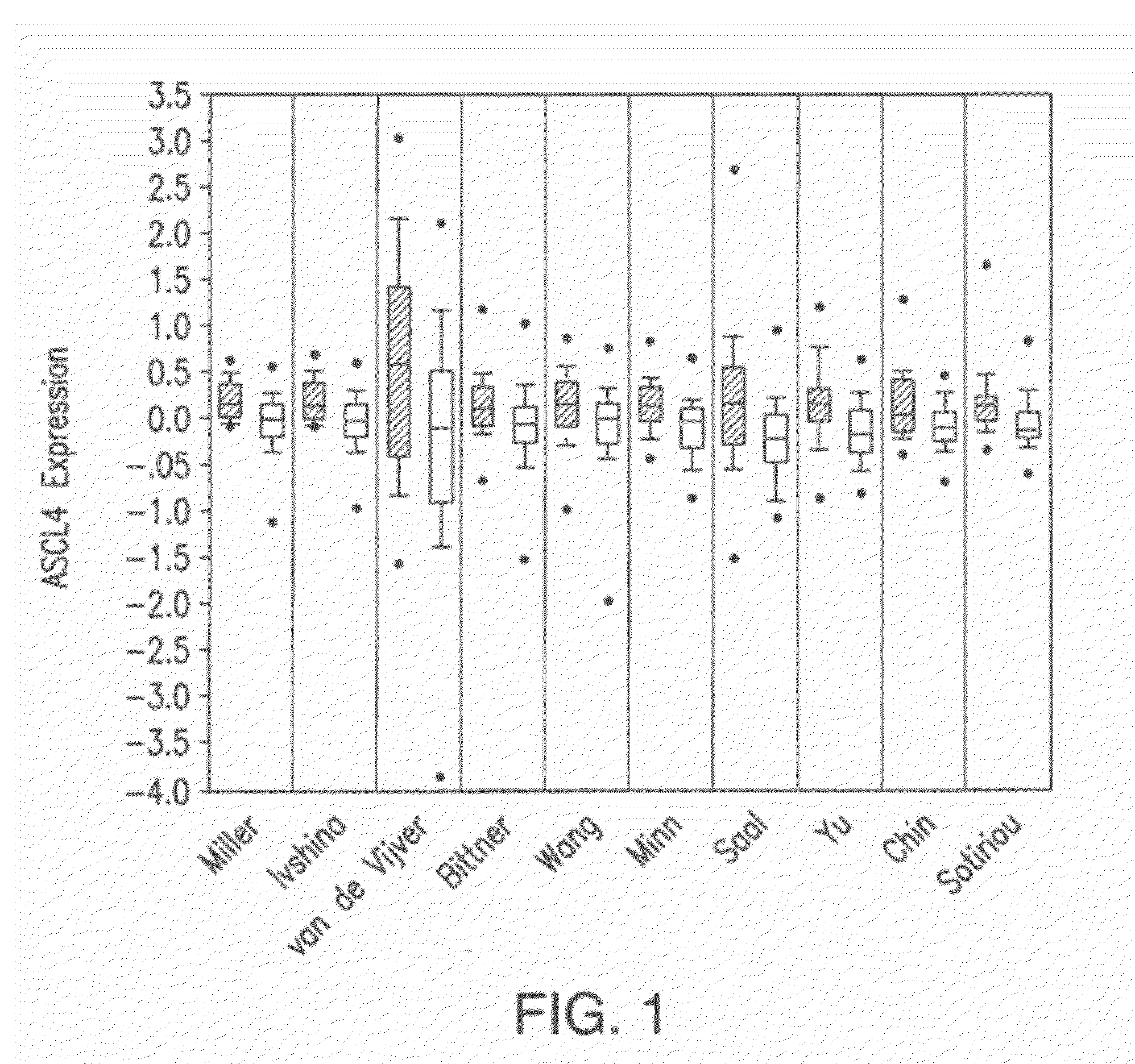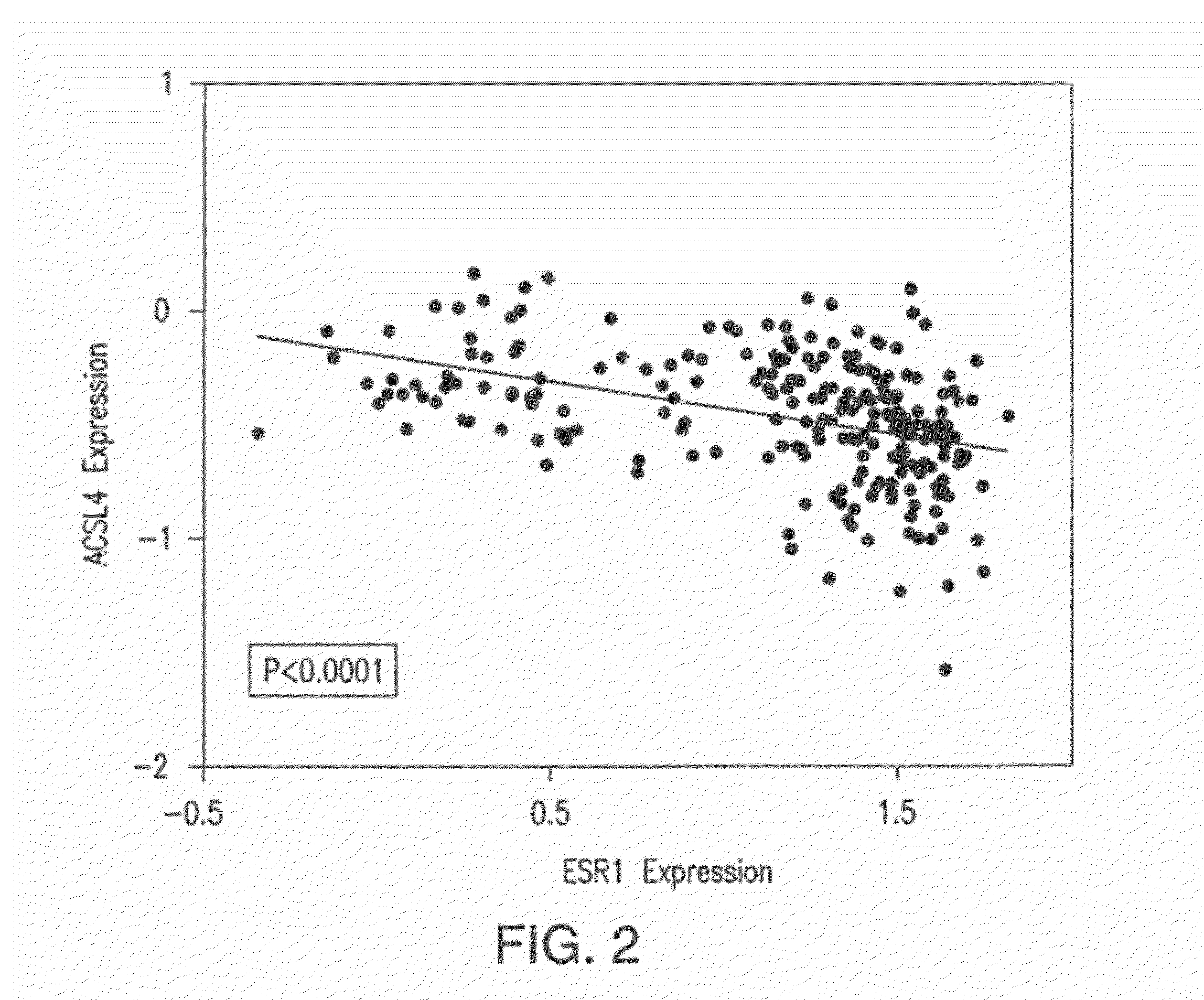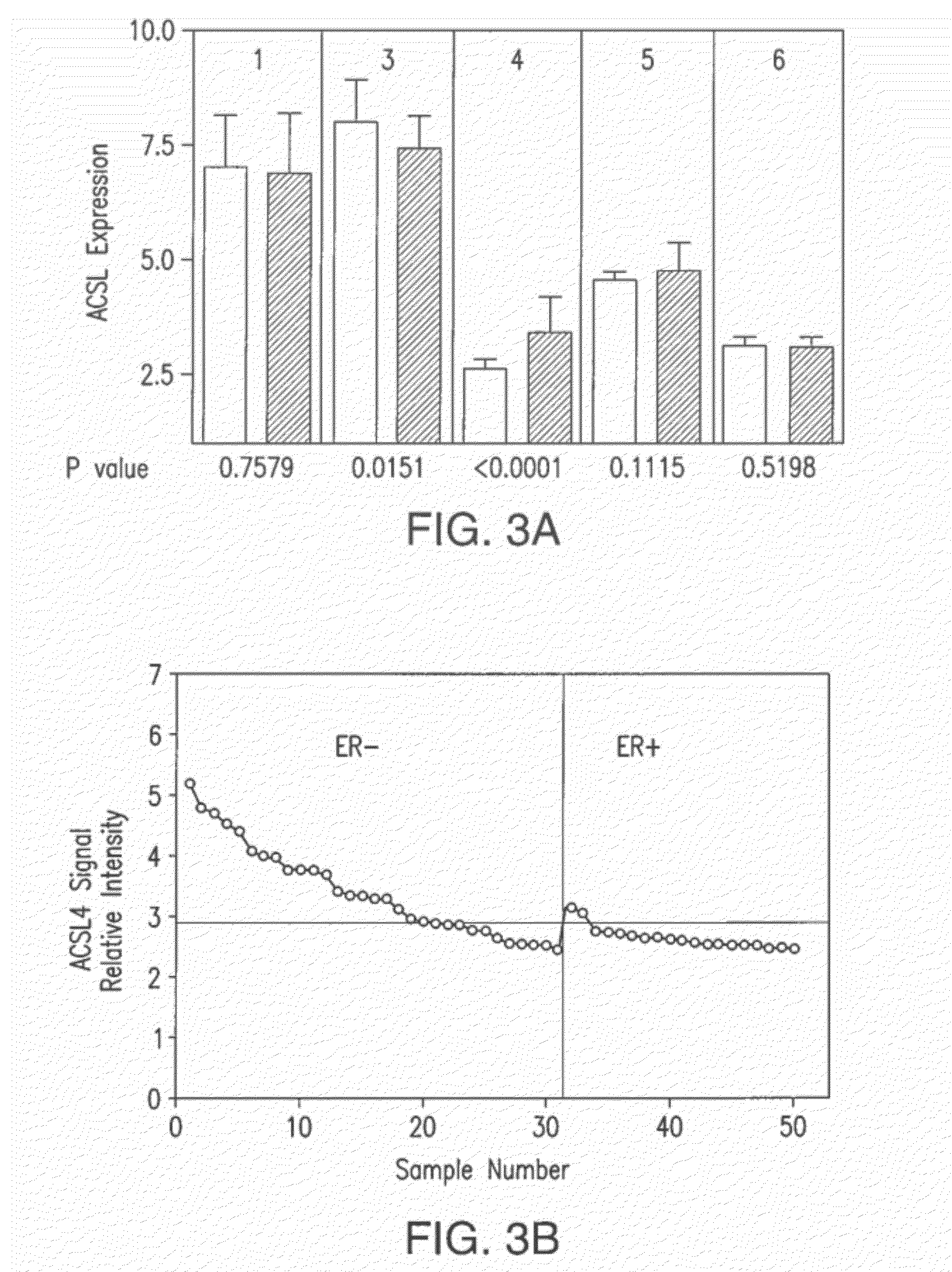Methods and compositions for determining the responsiveness of cancer therapeutics
a cancer and responsiveness technology, applied in the field of prognostic methods, can solve the problems of increased breast cancer recurrence incidence, poor prognosis, and progressively poorer prognosis of stage 2 and 3 cancers, and achieve the effects of reducing the cleavage of the target rna, facilitating binding and/or activity of the sirna, and altering the activity of the target nucleic acid
- Summary
- Abstract
- Description
- Claims
- Application Information
AI Technical Summary
Benefits of technology
Problems solved by technology
Method used
Image
Examples
example 1
ACSL4 mRNA Expression as a Function of Estrogen Receptor Status in Tumor Samples
Analysis of Gene Expression Arrays
[0104]Studies have been previously carried out to determine differences in gene expression that contribute to the hormone independent breast cancer phenotype. In several of these studies, gene expression arrays were utilized to catalog these differences. These studies produced, in addition to the gene expression array data for the specific proteins being studied, an enormous amount of gene expression array data which was not analyzed.
[0105]In an effort to identify differences in lipogenesis between normal and malignant tissue, a search was performed on the ONCOMINE database (Rhodes et al. 2004. Neoplasia, 6:1-6), a cancer microarray database and web-based data-mining platform. The search of the ONCOMINE cancer microarray database resulted in the identification of 10 separate studies (Miller et al., Proc. Natl. Acad. Sci. USA 102(38):12550-12555 (2005); Ivshina et al., Ca...
example 2
Analysis of the Expression of ACSL4, ACSL3, ACSL4, ACSL5 and ACSL6 in ER-Positive and ER Negative Breast Cancer Cells Lines
Analysis of Microarray Expression Data
[0108]An analysis was performed on the microarray expression data (Neve et al., Cancer Cell, 10(6):515-527 (2006), which is hereby incorporated by reference in its entirety) to determine the expression of the five ACSL isoforms (1, 3, 4, 5 and 6) in 50 human breast cancer cell lines as a function of ER status. A further analysis was performed on the 50 human breast cancer cell lines to determine the relationship between ER status and ACSL4 expression,
Results
[0109]As illustrated in FIG. 3A, ACSL4 mRNA expression was significantly higher in ER-negative cells (P<0.0001), whereas expression of ACSL3 mRNA was significantly lower (P<0.015). There were no detectable differences in expression of ACSL1, 5, or 6 as a function of ER status. FIG. 3A shows the expression data for 19 ER-positive (unshaded bars) and 31 ER-negative (shaded ...
example 3
Analysis of ACSL4 Protein Expression in ER-Positive, ER-Negative, and AR-Positive and AR-Negative Breast Cancer Cells Lines
Materials and Methods
[0111]ER-positive (MCF-7, MDA-MB-415 and T47D), ER-negative (BT20, MDA MB-231, and SKBR3), AR-positive (LNCaP and LNCaP-AD, and AR-negative (PC3 and DU145) cells were grown in either 96-well or 24-well plates at 37° C. in a humidified atmosphere in Dulbecco's minimal essential medium (high-glucose) containing Earle's salts and supplemented with 10% fetal bovine serum and antibiotics (penicillin [100 U / ml], Fungizone [0.25 μg / ml], and streptomycin [100 μg / ml]). All cell culture reagents were from Invitrogen (Carlsbad, Calif.).
[0112]After the cells in the 96-well or 24-well plates were washed with phosphate-buffered saline without calcium or magnesium, either 40 μl (96-well) or 200 μl (24-well) of sample buffer (10 mM Tris-HCl, 1 mM EDTA, 2.5% SDS, 5% β-mercaptoethanol, 0.01% bromophenol blue, pH 8.0) was added to the well. Samples were then h...
PUM
| Property | Measurement | Unit |
|---|---|---|
| Therapeutic | aaaaa | aaaaa |
| Threshold limit | aaaaa | aaaaa |
| Chemotherapeutic properties | aaaaa | aaaaa |
Abstract
Description
Claims
Application Information
 Login to View More
Login to View More - R&D
- Intellectual Property
- Life Sciences
- Materials
- Tech Scout
- Unparalleled Data Quality
- Higher Quality Content
- 60% Fewer Hallucinations
Browse by: Latest US Patents, China's latest patents, Technical Efficacy Thesaurus, Application Domain, Technology Topic, Popular Technical Reports.
© 2025 PatSnap. All rights reserved.Legal|Privacy policy|Modern Slavery Act Transparency Statement|Sitemap|About US| Contact US: help@patsnap.com



